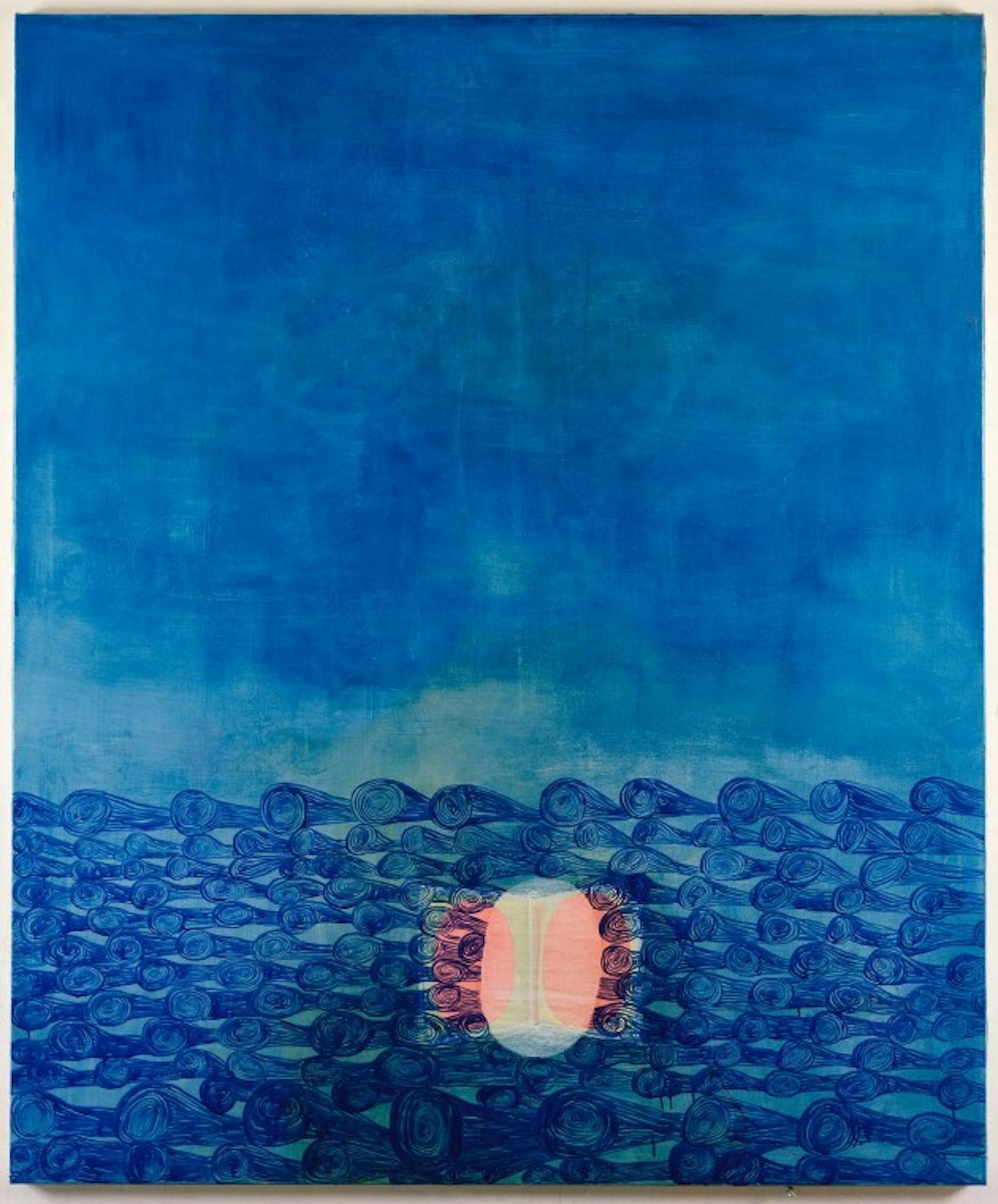ICA artist reconsiders social stereotypes
The first museum survey of the American artist Amy Sillman is currently on view at the Institute of Contemporary Art in Boston. Helen Molesworth, scholar, writer and Chief Curator of the ICA, brought together pieces which explore the relationship between Sillman's drawings and paintings-a relationship that juxtaposes figuration and abstraction. Sillman's use of soft and bright pastel shades plus cartoon-like figures is reminiscent of childhood daydreams and storybooks, but also of the space where the conscious meets the subconscious. Yet, underlying each work is Sillman's innate understanding of social anxiety, awkwardness and doubt.
Each room in the exhibition displays a grouping of paintings that share a common theme. The first groupings of paintings are portraits of art world movers and shakers. A few of the images are overlaid with black text with phrases such as, "This doesn't work," "(She looks better in person,)" or "I couldn't get this one right." The black text on top of the images captures the viewer's attention and draws a greater interest in the piece as the viewer attempts to decipher what is wrong with each piece. Crossing out an image and labeling it as a poor work captures the viewer's attention. There is something beautiful in the artist's self-proclaimed ugly and unskilled portrait as we, the viewer, peer intently at the piece hoping to decipher why or how the piece is unloved by the artist.
Humor also plays a significant role in Sillman's work. For example, in "Seating Chart," a white piece of paper with a large rectangle is filled with the bright colored pencils that display, rather than the individual's name, the mental state of the individual in each seat. These names include, "SENSE OF SOCIAL INFERIORITY," "HOMOPHOBIA AND MISOGYNY" and "FREQUENT FANTASIES OF DOOM." These new names, which highlight the individual's social fears and uncertainties, are exactly what the class thinks about each of their peers, but would never admit or acknowledge in a public setting.
Whereas "Seating Chart" depicts the awkwardness of social life, another collection of drawings, black and white and cartoon-like, and sketchy in their formal quality, comment on the nature of the art world. Individuals in exaggeratedly cool poses casually ask each other, "Are you going to Basel?" The pictures poke fun at the pretensions nature of this world of art, just as "A Phrase Guide for the Spring Art Season," depicts two columns. They show the comments an individual will say to an artist or about the exhibition, "I love your work!" and "It's so cinematic!" for example, which are then placed next to what the individual is actually thinking "Can I go now?" and "Seemingly endless," respectively.
Another grouping of drawings depicts the intimate moment of physical touch between couples as they cuddle and relax together. Laying next to each other, the couples Sillman drew were her personal friends who she requested to sit together in whatever pose they wanted so long as they were physically touching. Sillman first drew them in that staged instance of physical intimacy and then, once she was at her apartment, would redraw the event from memory. Here we see images of painful awkwardness mingled with occasional moments of happiness that depict the true nature of relationships. From these drawings where physical contact is emphasized, Sillman made the formal leap to large scale, geometric abstractions. The original drawings serve as a template for these paintings that have blocks of color, vectored lines and a pulsating energy to depict the physical intimacy of the original drawings.
Not all of Sillman's paintings are abstractions, though. In "Me & Ugly Mountain," a small, diminutive figure, standing in the left hand corner of the snowy, white landscape is completely dwarfed by the mountainous bundle of human anxiety, composed of various limbs and geometric shapes behind. The figure pulls this bundle behind her with a thin stream of string. She stands passively, her face is inactive and the image displays the fears and baggage everyday, average people carry constantly inside themselves.
Sillman's work has the uncanny ability to connect to audience members as she cuts through the smoke and mirrors of appearance to reveal the uncomfortable and at times debilating emotions that wreak havoc on one's existence. This engaging exhibition is on view till the 5th of January.



Please note All comments are eligible for publication in The Justice.